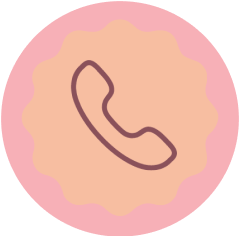As those first tiny teeth begin to peek through, it might feel like your child suddenly wants to chew on everything. From toys to fingers, everything is fair game. We know this phase can be tough, so we wanted to lend a helping hand with some insights into the world of teething. After all, knowing what to expect and how to soothe your little one might make this overcoming this milestone just a little bit easier.
What are the signs of teething?
While some babies begin teething as early as three months, most first teeth appear between four and six months - typically starting with the bottom incisors followed by the molars. Here are the most common signs of teething to look out for:
-
Increased drooling: As your baby begins teething, they may drool more or try to chew on things.
-
Gum pain and discomfort: Teething can cause gum pain, so it's likely your child will more irritable and fussy. If your baby seems overly distressed, it’s always best to check with your doctor.
-
Drool rash: Sometimes children can develop a rash on their face. This is due to the increased saliva which can irritate their skin (it's more a byproduct of the drooling).
-
Ear pulling: Your child might also pull on their ear on the side of the emerging tooth.
-
Flushed cheeks: This is also a common sign of teething.
Is a fever a normal part of teething?
While swollen gums may increase your child’s temperature, illness is not associated with the teething process. If your baby has a fever, it's likely there is another reason, so you should always talk to your doctor. This goes for any other signs of illness, such as vomiting or diarrhoea.
How do I soothe my teething baby?
We know it's just awful to see your child uncomfortable, but please rest assured that this will pass. Here are some gentle, effective ways to help relieve teething pain:
-
Gum massage: gently rub your baby's gums with a clean finger. You can also use a soft teething ring - just make sure it isn’t too firm, as this could cause further pain.
-
Chilled washcloth: Offer your baby a clean, wet washcloth that has been in the freezer for 20 minutes or so. Again, just make sure it’s not too hard, so you don’t hurt your baby's gums further.
-
Chilled foods: If your child is eating solids, you can try serving chilled foods to help soothe the discomfort.
-
Breastfeeding: If you are breastfeeding, this can be a great way to give your baby's some extra comfort.
-
Over-the-counter remedies: There are teething gels and pain medications available - just make sure you check with your doctor to ensure it's safe for your baby.
-
Chamomile tea: Caffeine-free chamomile tea can be used as a natural remedy. You can offer cool sips from a spoon or rubbing in gently on your baby's gums.
From our family to yours, we hope these tips help you. We know this isn’t the easiest of times, and we’re here to support you in every way that we can. Please reach out to our CareTeam if you have any questions or in need support.
.....
LittleOak has been nourishing children for many years and feeds millions of infants, babies and children across the globe each and every day, in countries such as Australia, New Zealand and Singapore. In the US, we're proud to have our FDA compliant Toddler Milk available for families.



























